Notcoin
Could This Signal a New Bull Market?
Published
3 months agoon
By
admin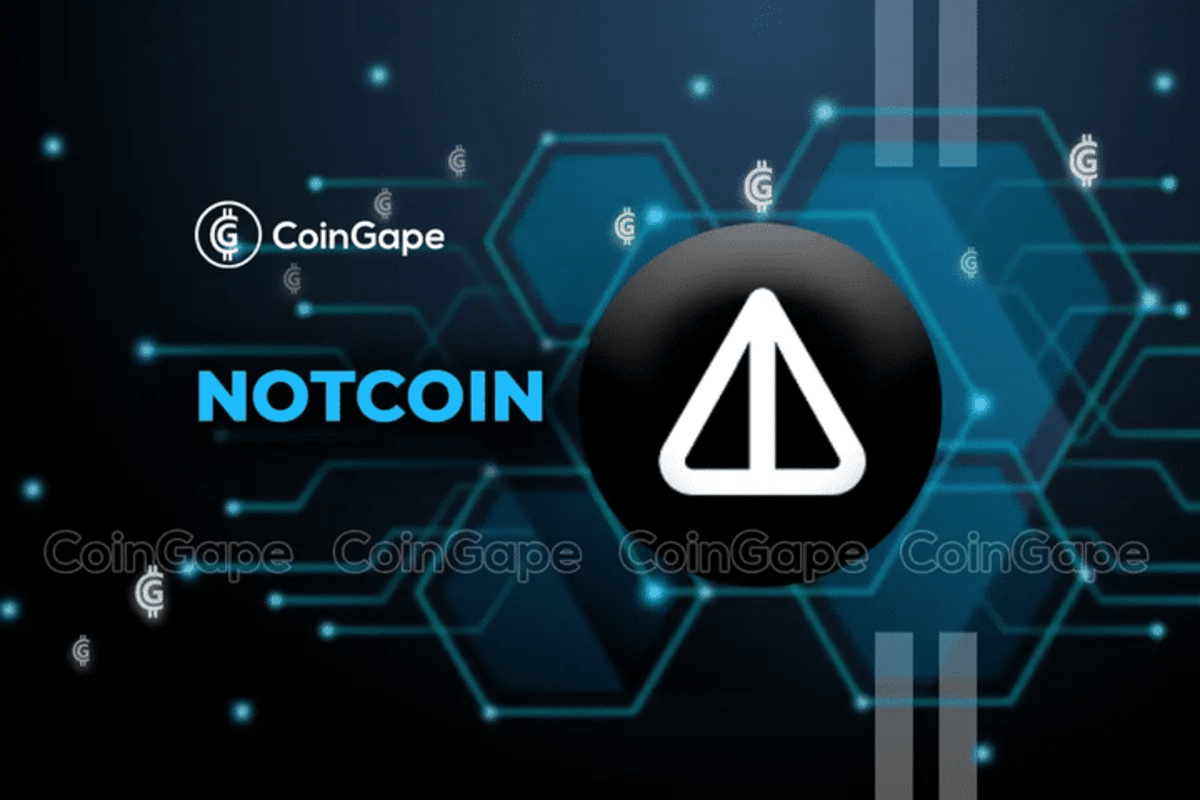
Notcoin (NOT) price, a Telegram-based altcoin, has experienced a significant upward trend recently. Currently, the price of NOT is stable, holding strong above its key support levels. This recent uptick aligns with broader movements across the cryptocurrency markets, suggesting a synchronized growth phase.
Notcoin Price Surges Amid Telegram Airdrop Influence
Notcoin has recently enjoyed a 31% increase in value. This jump is attributed to a Telegram-based token, Hamster Kombact. The airdrop there also boosted Toncoin, impacting Notcoin’s market movements. Over the past week, Notcoin’s price movement has shown bullish tendencies.
As the trend gains momentum, further rises are anticipated. Currently, the crypto market is broadly bullish. Bitcoin, for instance, is maintaining a position above $66,000. Ethereum has also experienced significant growth, now trading at over $2,700. These upward trends in major cryptocurrencies are positively affecting other prominent altcoins, including Notcoin.
Can NOT Price Hit ATH by End of September?
Notcoin price indicates a strong ascending trend as the cryptocurrency hovers above the $0.01 support level. At the time of writing, the NOT price has surged to $0.01016, marking a significant increase of 31.94% over the past week.
The telegram-based altcoin can maintain this support level and potentially test its previous all-time high of $0.02896, set back in June 2024. The market’s response over the coming days will be crucial in determining whether this is a short-term spike or the beginning of a sustained upward trend.
The Notcoin price exhibits signs of potential growth, which, if maintained, could push beyond the current $0.011 resistance level. This upward movement may set the NOT price at approximately $0.012, with the possibility of reaching as high as $0.015 by the end of the month.
The 4-hour technical indicators for Notcoin show a significant uptrend. The Relative Strength Index (RSI) has escalated to 86.71, indicating potential overbought conditions that could hint at a forthcoming price correction or consolidation.


According to Coinglass data, the derivatives trading volume for Notcoin has seen a significant uptick. Additionally, the open interest registered a notable increase. These robust metrics are contributing factors fueling a surge in Notcoin price.


The recent surge in Notcoin’s price, supported by strong technical indicators and market sentiment, suggests a potential bullish trend. If the momentum sustains, Notcoin may breach higher resistance levels, signaling a new phase of market optimism for this altcoin.
Frequently Asked Questions (FAQs)
The price surge is attributed to strong bullish market sentiment, an increase in trading volume, and influence from related token activities on Telegram.
Notcoin could potentially reach as high as $0.015 by the end of the month if current trends continue.
Notcoin’s all-time high was $0.02896 set in June 2024. It could test this level again if the bullish trend persists.
Coingape Staff
CoinGape comprises an experienced team of native content writers and editors working round the clock to cover news globally and present news as a fact rather than an opinion. CoinGape writers and reporters contributed to this article.
Disclaimer: The presented content may include the personal opinion of the author and is subject to market condition. Do your market research before investing in cryptocurrencies. The author or the publication does not hold any responsibility for your personal financial loss.
Source link
You may like


Metaplanet Bitcoin Reserves Grow With Fresh $61 Million Purchase


Investors turn to Lightchain AI 3000x potential after PEPE drop


Moonpay In Talks To Acquire Coinbase Commerce Rival Helio


The Satoshi Papers Explores The Role Of The State In A Post-Bitcoin World: An Interview With Natalie Smolenski


Stablecoin Issuer Tether Invests $775,000,000 Into YouTube Rival Rumble


Solana L2 Sonic includes TikTok users in airdrop
Altcoins
Analyst Predicts Massive Rallies for Two Under-the-Radar Altcoins – Here Are His Targets
Published
1 month agoon
November 12, 2024By
admin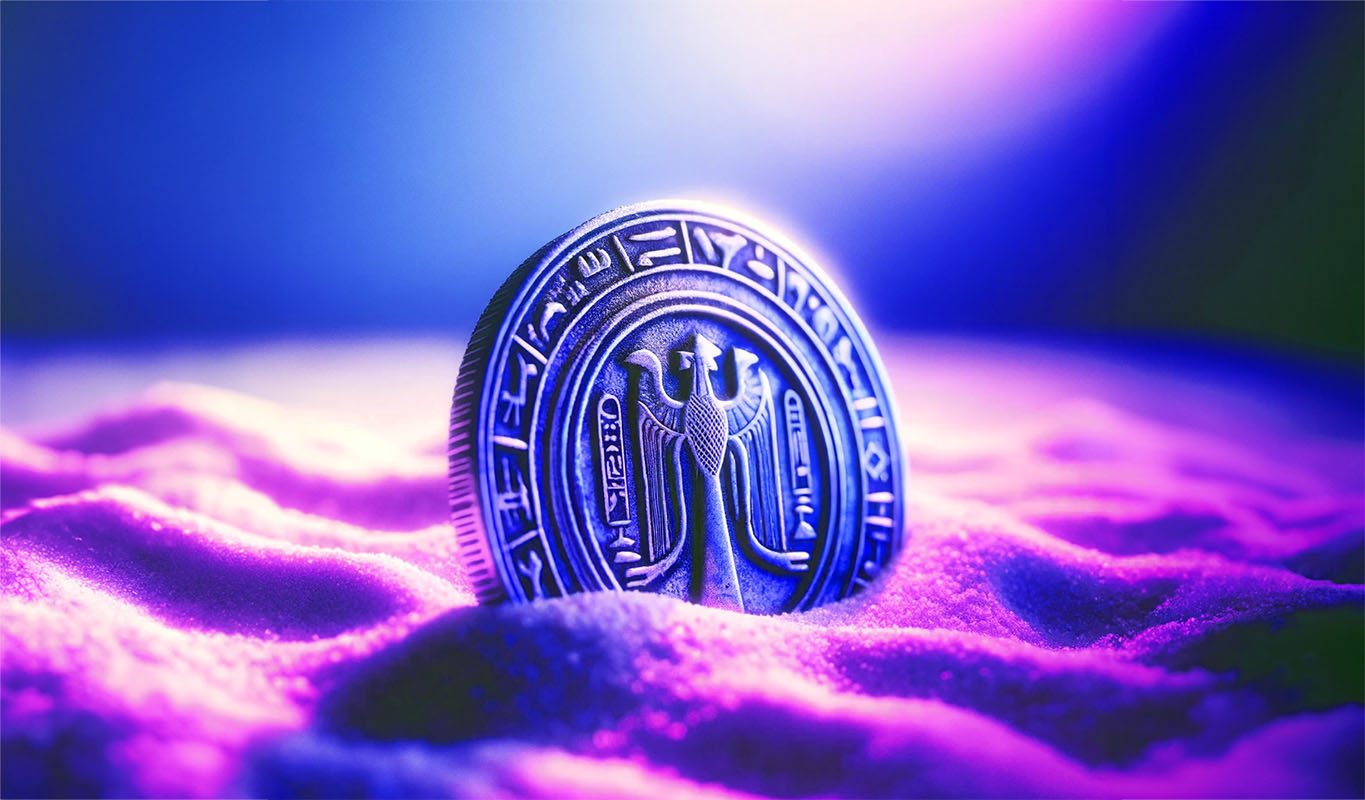
A closely followed crypto strategist thinks two altcoins unseen by most traders are gearing up for huge upside bursts.
Analyst Ali Martinez tells his 78,600 followers on the social media platform X that he’s bullish on the native asset of the peer-to-peer file storage network Filecoin (FIL).
According to the analyst, FIL looks poised to rally to its range high after respecting its long-term support. Martinez also thinks that FIL could witness exponential rallies if it manages to overcome a crucial resistance level.
“Missed out on the $2.94 entry, but I’m still bullish on Filecoin FIL at this level.
The lower boundary has held strong for almost two years, setting us up for a potential rebound to $9.50 – a 145% gain. If we see a breakout above the upper boundary ($9.50), FIL could reach $30, delivering around 700% upside from here.”
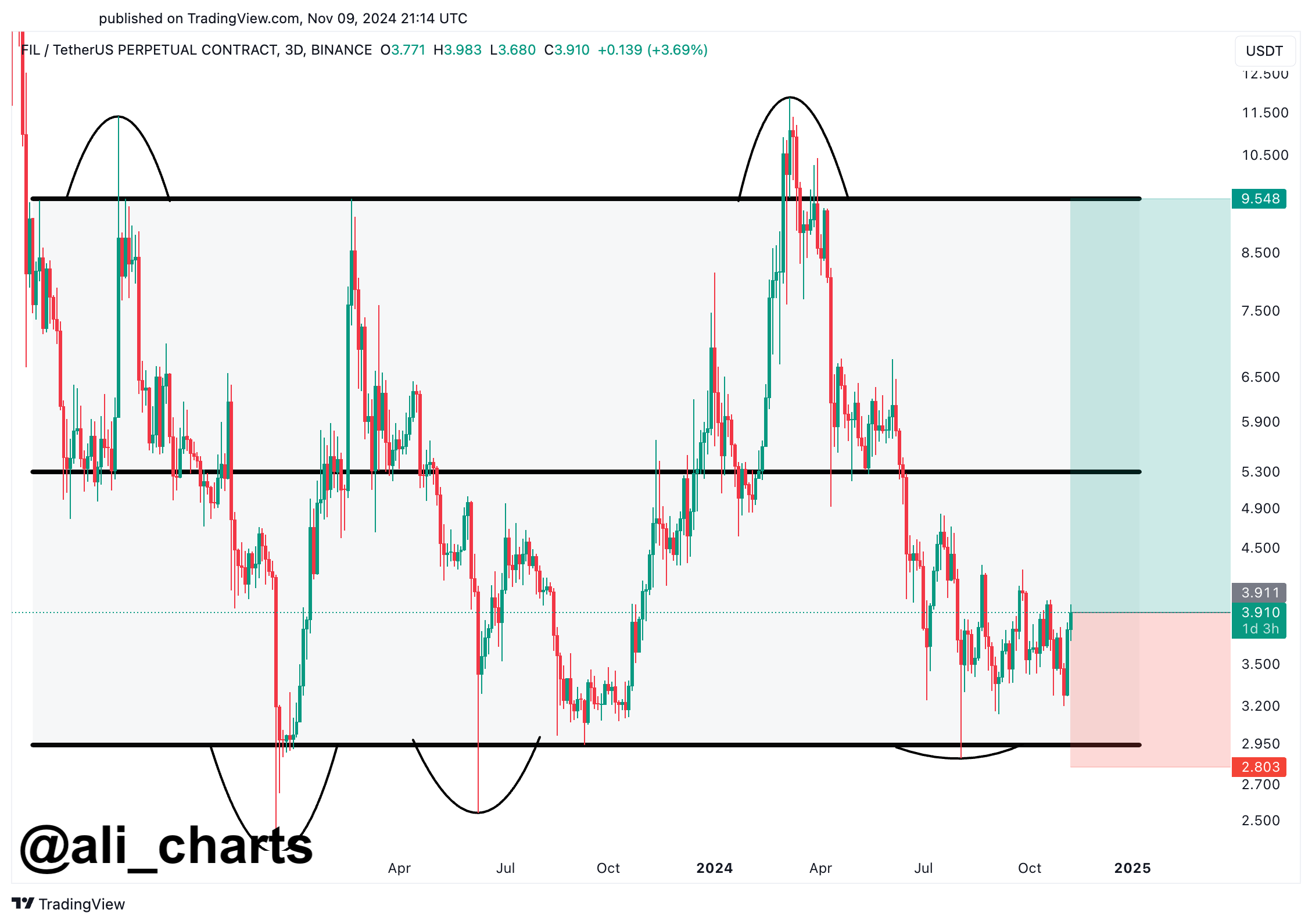
At time of writing, FIL is worth $4.32, up over 7% in the past day.
The trader is also keeping an eye on NOT, the community token for the popular Telegram-based tap-to-earn mining game Notcoin. Martinez says he’s bullish on NOT after the altcoin shattered the diagonal resistance of a falling wedge structure – a bullish reversal pattern.
“Notcoin NOT broke out of the falling wedge, and its price is projected to increase 76% to $0.012!”

At time of writing, NOT is worth $0.0076.
Don’t Miss a Beat – Subscribe to get email alerts delivered directly to your inbox
Check Price Action
Follow us on X, Facebook and Telegram
Surf The Daily Hodl Mix
 

Disclaimer: Opinions expressed at The Daily Hodl are not investment advice. Investors should do their due diligence before making any high-risk investments in Bitcoin, cryptocurrency or digital assets. Please be advised that your transfers and trades are at your own risk, and any losses you may incur are your responsibility. The Daily Hodl does not recommend the buying or selling of any cryptocurrencies or digital assets, nor is The Daily Hodl an investment advisor. Please note that The Daily Hodl participates in affiliate marketing.
Generated Image: DALLE3
Source link
Altcoin
Trader Says Telegram Gaming Token Primed To Rally by Nearly 100%, Updates Outlook on Ethereum and Dogecoin
Published
2 months agoon
November 8, 2024By
admin
A popular crypto strategist is suddenly flipping bullish on an altcoin connected to a viral game on the encrypted messaging platform Telegram.
Analyst Ali Martinez tells his 77,300 followers on the social media platform X that Notcoin (NOT) could soar 100% from its current value.
“Notcoin is showing a promising risk-to-reward setup. With a falling wedge pattern forming, it could be primed for a bullish breakout toward $0.012!”
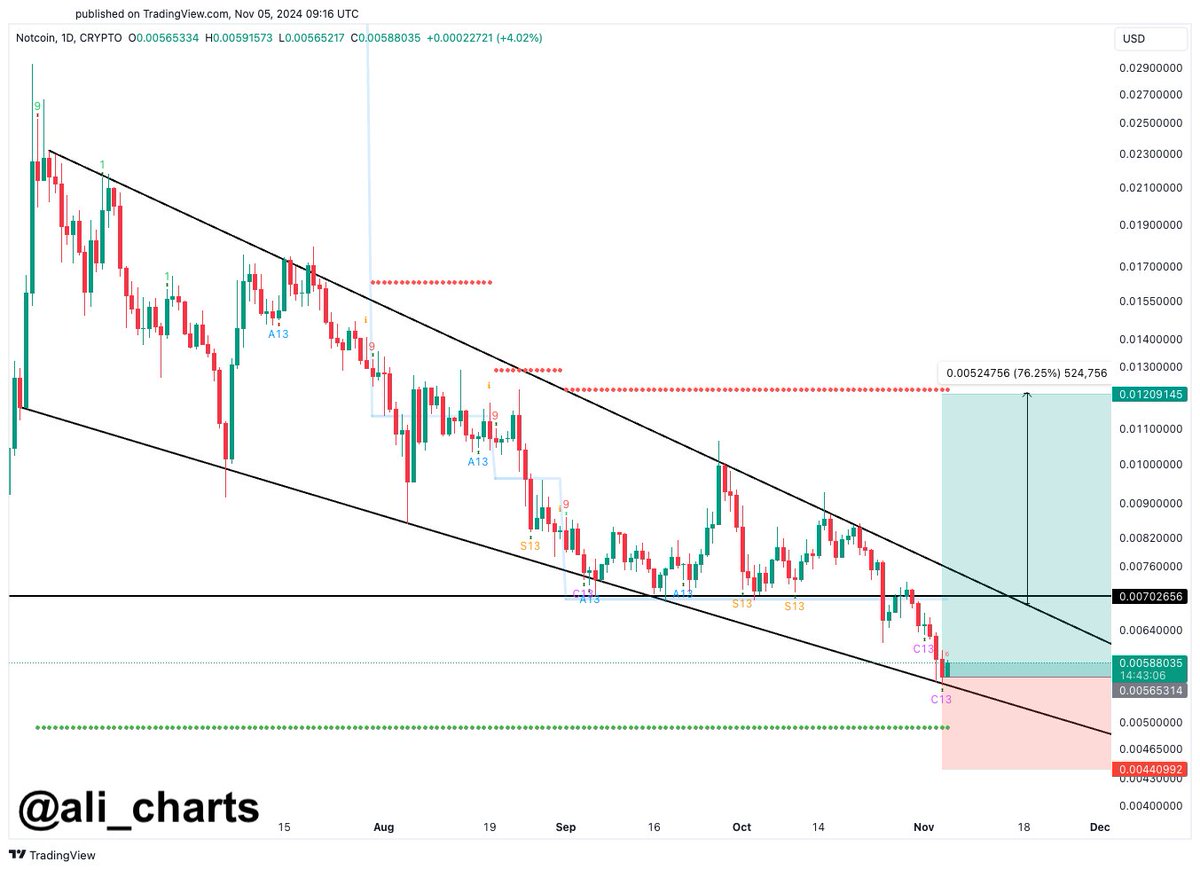
A falling wedge breakout is a technical analysis pattern that is used to identify bullish reversals in an asset’s price. The pattern is characterized by a series of lower highs and lower lows that form a wedge-shaped pattern on the chart.
As the pattern progresses, the distance between the highs and lows decreases, which indicates that the selling pressure is weakening. When price breaks out of the upper trend line of the wedge, it’s traditionally considered bullish.
NOT is trading for $0.006 at time of writing, up 7.9% in the last 24 hours.
The analyst is also bullish on Ethereum (ETH), suggesting it could soon hit $6,000.
“The risk-to-reward ratio on Ethereum is too good to pass up for a long position! I’ve set my stop below $1,880 and am aiming for a target of $6,000.”
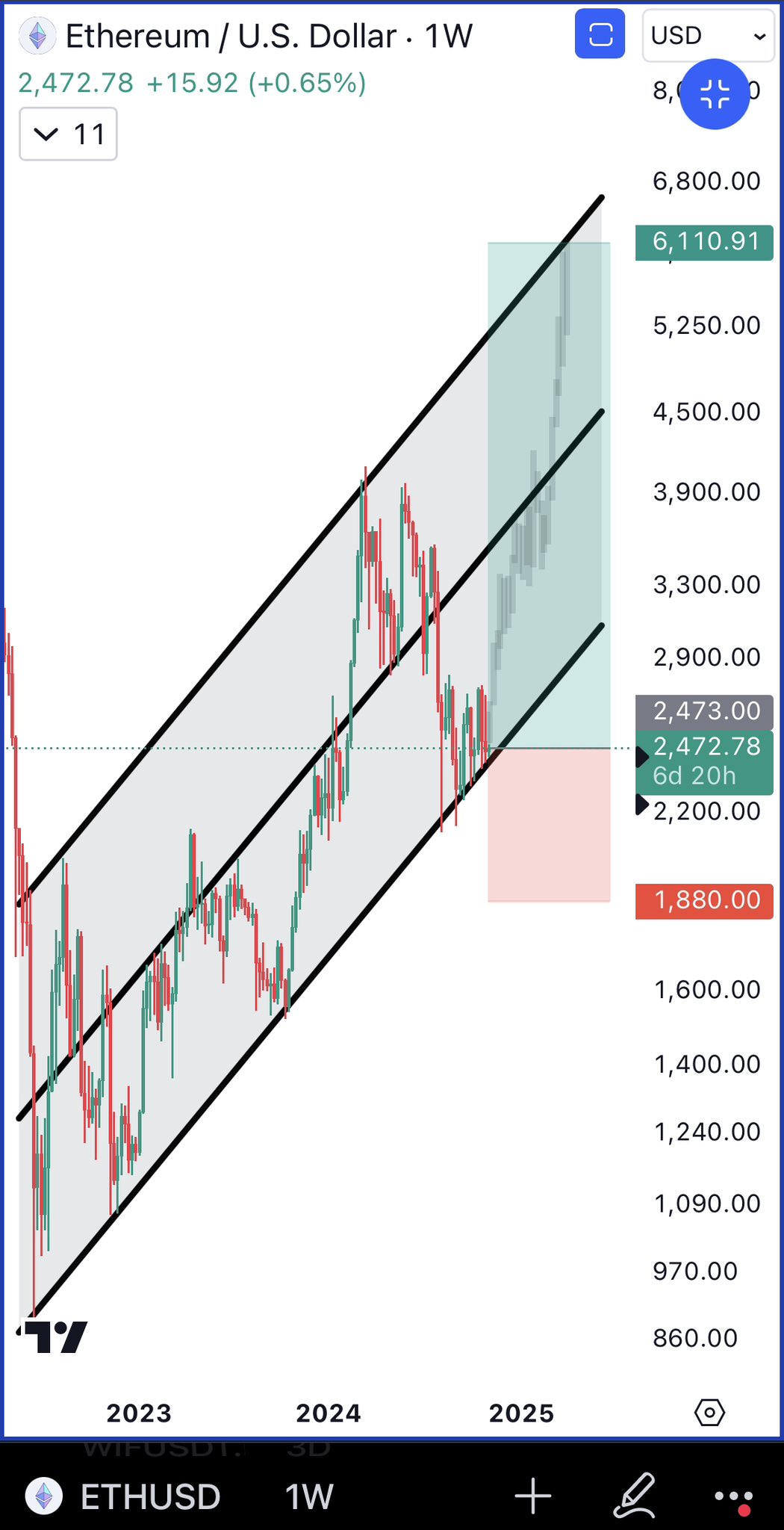
Looking at his chart, the analyst suggests ETH is holding the bottom trend line of the ascending channel as support and could soon re-test the upper bound at around $6,100.
Next up, the analyst suggests that Dogecoin (DOGE) may see an explosive rally, in part, due to billionaire Elon Musk. Musk, one of the memecoin’s most famous supporters, is now close to US President-elect Donald Trump, after playing a role in his election.
The analyst also believes DOGE may repeat a historic pattern based on Fibonacci extensions, which traders use in technical analysis to estimate profit targets and price pullbacks. They are based on Fibonacci ratios.
“With Elon Musk now influencing the 47th President, Donald Trump, Dogecoin could be primed for a wild ride! In past bull cycles, once DOGE broke the 0.50 Fibonacci retracement, it often rallied to the 1.618 or even 2.272 Fib levels. If history repeats, we could see DOGE hit somewhere between $4 and $23!
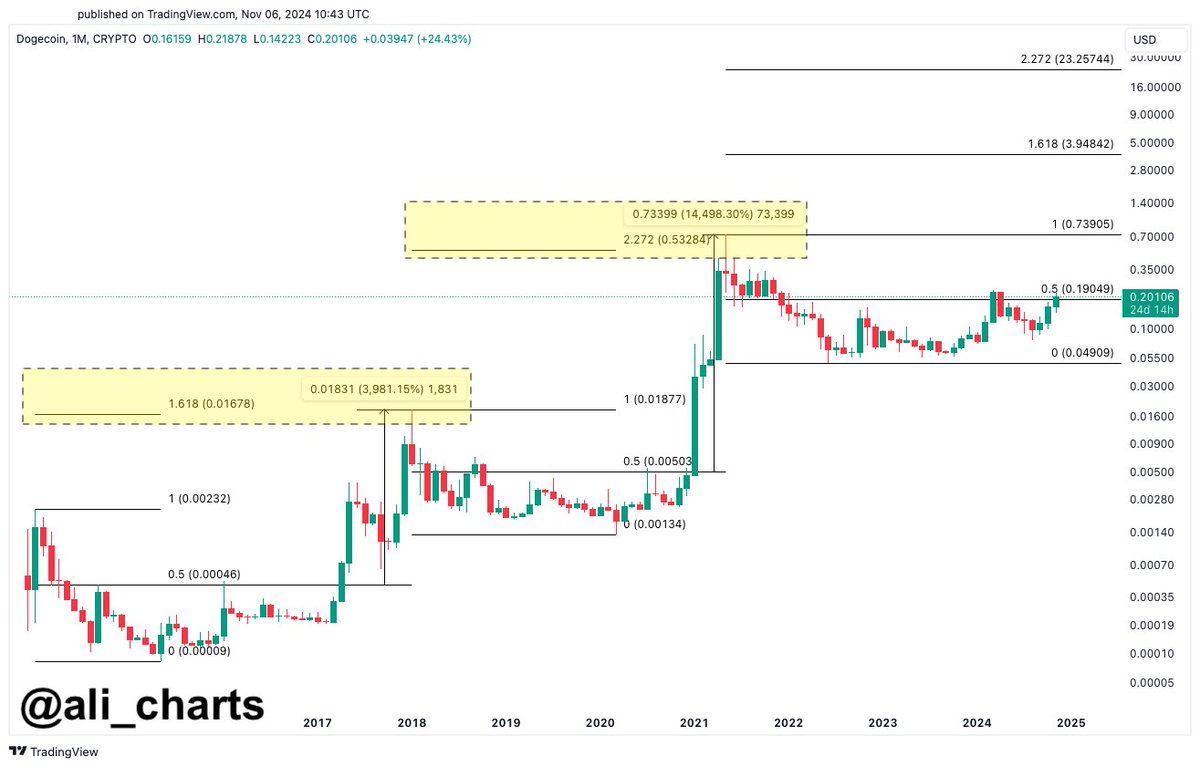
Dogecoin is trading for $0.1969 at time of writing, up 15% in the last 24 hours.
Don’t Miss a Beat – Subscribe to get email alerts delivered directly to your inbox
Check Price Action
Follow us on X, Facebook and Telegram
Surf The Daily Hodl Mix
 

Disclaimer: Opinions expressed at The Daily Hodl are not investment advice. Investors should do their due diligence before making any high-risk investments in Bitcoin, cryptocurrency or digital assets. Please be advised that your transfers and trades are at your own risk, and any losses you may incur are your responsibility. The Daily Hodl does not recommend the buying or selling of any cryptocurrencies or digital assets, nor is The Daily Hodl an investment advisor. Please note that The Daily Hodl participates in affiliate marketing.
Generated Image: Midjourney
Source link
blockchain games
Web3 gaming adoption is driven by platforms like Telegram
Published
3 months agoon
September 18, 2024By
admin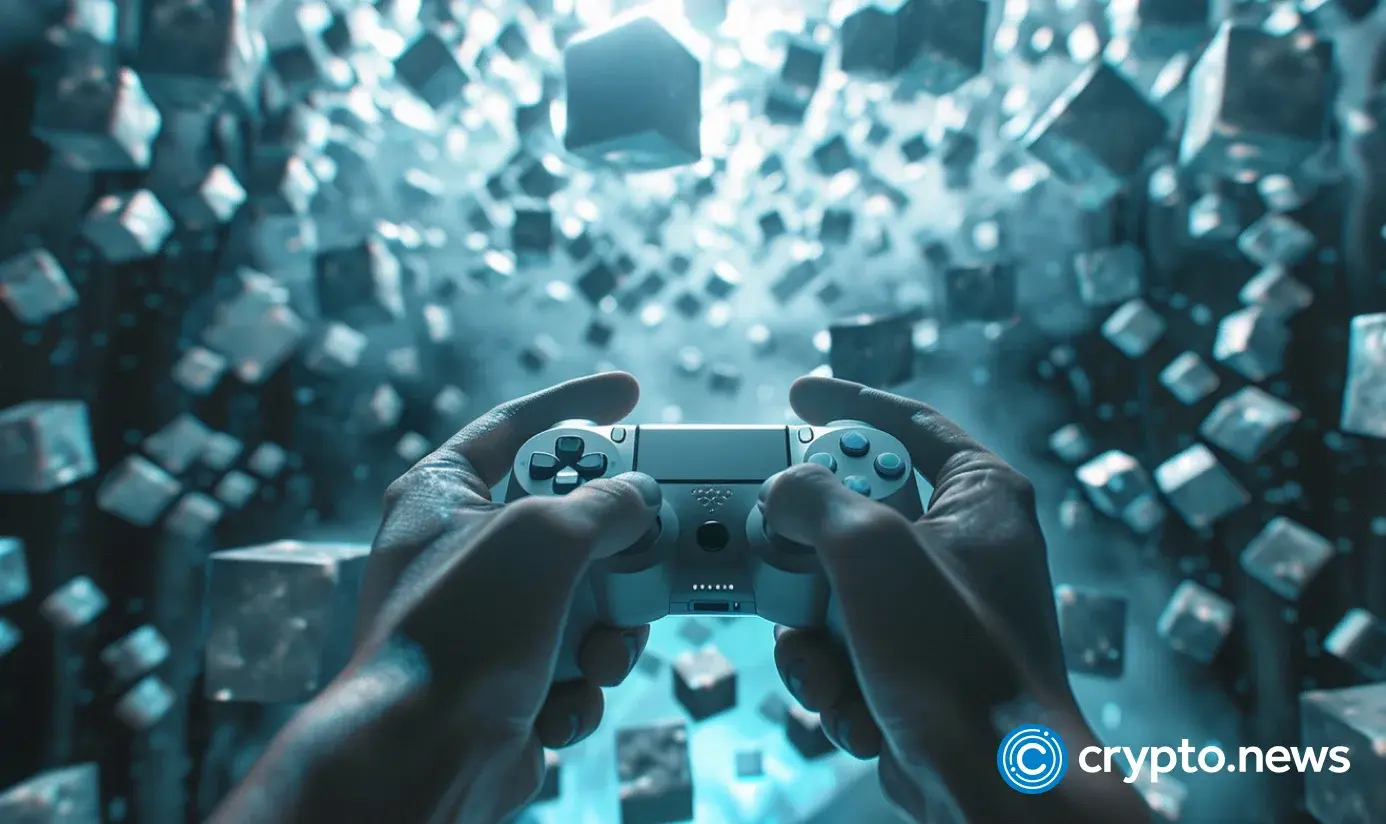

A recent report commissioned by Elympics, a Web3 gaming protocol, highlighted how Telegram and blockchain technology have transformed the gaming world.
The research report, shared with crypto.news and based on feedback from nearly 1,000 global gamers, shows how platforms like Telegram and the rise of “compete-to-earn” games are driving the adoption of Web3 gaming.
The success of Telegram as a gaming platform was evident in the survey results, with 53.56% of players choosing it as their preferred platform for playing mobile games. This highlights Telegram’s growing influence in the gaming space and its ability to attract a large, engaged player base.
Most respondents, 78.77%, reported playing games daily, while 15.19% indicated they play a few days a week.
With the rise of competitive gaming, the report delved into the impact of blockchain games and their community-driven advances on the gaming industry.
“Our research shows that with the entry of social platforms such as Telegram into the Web3 world and the skill games growth with community-driven money competitions, we are seeing the start of mass adoption by players around worldwide. Gamers enjoy winning through competition so we build games meeting this need.”
Tom Kopera, COO of Elympics
Traditionally, games have been centralized, meaning a company controls the game’s development, design, and rules. In blockchain games, the power is more decentralized—players have more control, and they can own in-game assets that can’t be easily tampered with.
“Blockchain decentralizes the ownership, turning players into investors of time and money into their beloved games.”
Stan Fiedor, General Manager Europe of Wemix
This ownership includes everything from virtual items to characters to NFTs, which are stored on a blockchain and can even be traded outside of the game.
Mass adoption of blockchain games
One of the major points in the report is how these new games can transform mobile gaming. Blockchain-based mobile games offer players the chance to monetize their skills and gameplay, turning a previously passive activity into one with financial rewards.
The report noted that blockchain gaming is on the verge of mass adoption, with “a growing interest from gamers eager to participate,” according to Michał Dąbrowski, CEO of Elympics.
However, the report noted that Web3 gaming is still overcoming skepticism due to the flaws of its earlier versions. Initial blockchain games faced issues like poor design and broken in-game economies.
According to the survey, the most common reason for not playing blockchain games is uncertainty about how to get started, with 32.11% of respondents citing that they “have no idea how to start.”
Today, the industry has learned from some of these mistakes, with developers focusing on creating better games with solid economic models that encourage fair play and real ownership of digital assets. Elympics believes that, by adding real-world stakes to gaming, Web3 could be the next big shift in the industry.
TON and Telegram
TON (TON) and Telegram have embraced blockchain to drive engagement and revenue without compromising user trust, the report noted. TON has become a popular hub for hyper-casual games like Notcoin (NOT) and Hamster Kombat, attracting millions of users.
Telegram’s simplified crypto wallet, automatically integrated for non-US users, eliminates barriers to entry, helping onboard millions of real users effortlessly.
Blockchain games on TON appeal to both casual and competitive gamers, offering a seamless experience that feels no different from traditional Web2 games.
The report concluded that platforms like Telegram are helping to bridge the gap between Web2 and Web3, creating an ecosystem where players may not even realize they are engaging with blockchain technology.
Source link

Metaplanet Bitcoin Reserves Grow With Fresh $61 Million Purchase

Investors turn to Lightchain AI 3000x potential after PEPE drop

Moonpay In Talks To Acquire Coinbase Commerce Rival Helio

The Satoshi Papers Explores The Role Of The State In A Post-Bitcoin World: An Interview With Natalie Smolenski

Stablecoin Issuer Tether Invests $775,000,000 Into YouTube Rival Rumble

Solana L2 Sonic includes TikTok users in airdrop

5 Tokens Ready For A 20X After Solana ETF Approval

Solana beats Ethereum in a key metric 3 months in a row

SCENE’s 2024 Person of the Year: Iggy Azalea

BTC Risks Falling To $20K If This Happens

Most Layer 2 solutions are still struggling with scalability

Here’s why Stellar Price Could Go Parabolic Soon

Perp-Focused HyperLiquid Experiences Record $60M in USDC Net Outflows

Experts say these 3 altcoins will rally 3,000% soon, and XRP isn’t one of them

Robert Kiyosaki Hints At Economic Depression Ahead, What It Means For BTC?
182267361726451435

Why Did Trump Change His Mind on Bitcoin?

Top Crypto News Headlines of The Week

New U.S. president must bring clarity to crypto regulation, analyst says

Will XRP Price Defend $0.5 Support If SEC Decides to Appeal?

Bitcoin Open-Source Development Takes The Stage In Nashville

Ethereum, Solana touch key levels as Bitcoin spikes

Bitcoin 20% Surge In 3 Weeks Teases Record-Breaking Potential

Ethereum Crash A Buying Opportunity? This Whale Thinks So

Shiba Inu Price Slips 4% as 3500% Burn Rate Surge Fails to Halt Correction

Washington financial watchdog warns of scam involving fake crypto ‘professors’

‘Hamster Kombat’ Airdrop Delayed as Pre-Market Trading for Telegram Game Expands

Citigroup Executive Steps Down To Explore Crypto
Mostbet Güvenilir Mi – Casino Bonus 2024

NoOnes Bitcoin Philosophy: Everyone Eats
Trending

 3 months ago
3 months ago182267361726451435

 Donald Trump5 months ago
Donald Trump5 months agoWhy Did Trump Change His Mind on Bitcoin?

 24/7 Cryptocurrency News4 months ago
24/7 Cryptocurrency News4 months agoTop Crypto News Headlines of The Week

 News4 months ago
News4 months agoNew U.S. president must bring clarity to crypto regulation, analyst says

 Price analysis4 months ago
Price analysis4 months agoWill XRP Price Defend $0.5 Support If SEC Decides to Appeal?

 Opinion5 months ago
Opinion5 months agoBitcoin Open-Source Development Takes The Stage In Nashville

 Bitcoin5 months ago
Bitcoin5 months agoEthereum, Solana touch key levels as Bitcoin spikes

 Bitcoin5 months ago
Bitcoin5 months agoBitcoin 20% Surge In 3 Weeks Teases Record-Breaking Potential



✓ Share: